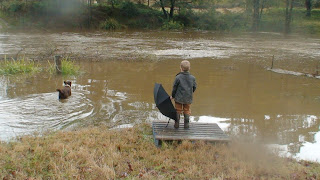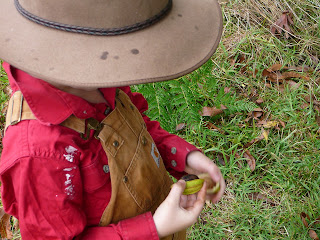
The pecans are getting close to being ready to pick. The air is thick with white cockatoos who are enjoying my pecans!
The pecan,
Carya illinoinensis, is a great tree and is well suited to organic farming. Our pecan groves are managed both for nuts and for grazing of livestock. This is called “agroforestry” and involves growing trees on the same unit of land as crops or livestock. The idea behind agroforestry is to derive both economic and ecological benefits two key goals of sustainable agriculture. We graze fat, happy Angus cattle between the rows of pecans.
Looking after pecans Our pecans are organically grown, handpicked ripe, and then dried. They are not processed in any way. They keep well at a cool room temperature so long as they remain in the shell. Shelled Pecans absorb odours and go rancid quickly, especially in hot weather. Pecans can be frozen, thawed out and frozen again, if necessary. Pecans are great as a peel-and-eat snack and their distinctive taste is a great addition to a salad or to almost any meal. Pecans can be toasted to enhance their flavour. There are two ways to toast nuts: in a hot oven for about seven minutes, stirring them from time to time to prevent burning, or on the stove top in a heavy pan. Toast on medium to high heat, stirring frequently. As soon as nuts begin to smoke a little, they release their aroma and are ready. Be sure to let them cool before chopping.
Native Americans Long before Europeans arrived in North America Native Americans were using pecans as an important food source. Indeed, the native life and their nomadic existence revolved around the pecan tree and its life-sustaining nut. Archaeologists have shown a major concentration of campsites in the immediate areas of the heaviest native pecan stands.

Native Americans came in great numbers and concentrated in the river valleys in the fall to harvest pecans. Hunting and all other activities took place from their pecan valley headquarters. In some communities these Native Americans depended on the pecan as their major food resource for about 4 months of the year.
Many varieties of pecans (there are over 1,000) are named for Native American tribes, including Cheyenne, Mohawk, Sioux, Choctaw and Shawnee.















